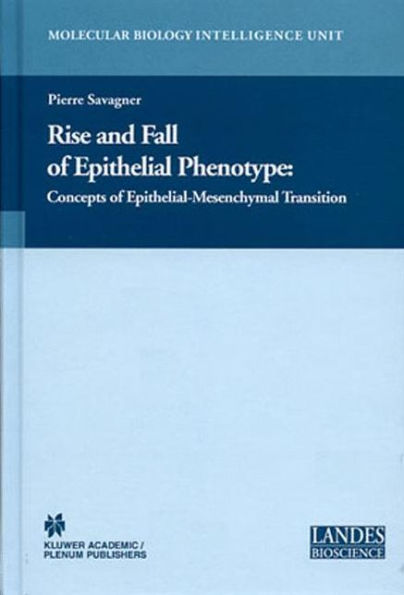The Rise and Fall of Epithelial Phenotype is the first book to comprehensively introduce the concept of EMT. The first part of this volume describes main examples and models and explains their physiological relevance. These examples include hydra morphogenesis, gastrulation in mouse, drosophila and sea urchin, as well as neural crest cell migration and heart morphogenesis in vertebrates. Part two reviews in detail, specific EMT molecular pathways covering extracellular induction, transduction and transcription response and modulation of cell-cell adhesion structures. It emphasizes new specific pathways with potential medical applications. EMTs can also be linked to pathological events such as wound healing and cancer progression, as detailed in this section of the book.
The Rise and Fall of Epithelial Phenotype is the first book to comprehensively introduce the concept of EMT. The first part of this volume describes main examples and models and explains their physiological relevance. These examples include hydra morphogenesis, gastrulation in mouse, drosophila and sea urchin, as well as neural crest cell migration and heart morphogenesis in vertebrates. Part two reviews in detail, specific EMT molecular pathways covering extracellular induction, transduction and transcription response and modulation of cell-cell adhesion structures. It emphasizes new specific pathways with potential medical applications. EMTs can also be linked to pathological events such as wound healing and cancer progression, as detailed in this section of the book.

Rise and Fall of Epithelial Phenotype: Concepts of Epithelial-Mesenchymal Transition
248
Rise and Fall of Epithelial Phenotype: Concepts of Epithelial-Mesenchymal Transition
248Hardcover(2005)

Product Details
| ISBN-13: | 9780306482397 |
|---|---|
| Publisher: | Springer US |
| Publication date: | 07/13/2005 |
| Series: | Molecular Biology Intelligence Unit |
| Edition description: | 2005 |
| Pages: | 248 |
| Product dimensions: | 6.14(w) x 9.21(h) x 0.36(d) |
